- Home
- H. P. Lovecraft
The Shadow Out of Time Page 5
The Shadow Out of Time Read online
Page 5
I talked with the mind of Yiang–Li, a philosopher from the cruel empire of Tsan–Chan, which is to come in 5,000 A.D.; with that of a general of the greatheaded brown people who held South Africa in 50,000 B.C.; with that of a twelfth-century Florentine monk named Bartolomeo Corsi; with that of a king of Lomar who had ruled that terrible polar land one hundred thousand years before the squat, yellow Inutos came from the west to engulf it.
I talked with the mind of Nug–Soth, a magician of the dark conquerors of 16,000 A.D.; with that of a Roman named Titus Sempronius Blaesus, who had been a quaestor in Sulla’s time; with that of Khephnes, an Egyptian of the 14th Dynasty, who told me the hideous secret of Nyarlathotep, with that of a priest of Atlantis’ middle kingdom; with that of a Suffolk gentleman of Cromwell’s day, James Woodville; with that of a court astronomer of preInca Peru; with that of the Australian physicist Nevil Kingston–Brown, who will die in 2,518 A.D.; with that of an archimage of vanished Yhe in the Pacific; with that of Theodotides, a Greco–Bactrian official of 200 B.C.; with that of an aged Frenchman of Louis XIII’s time named Pierre–Louis Montagny; with that of Crom–Ya, a Cimmerian chieftain of 15,000 B.C.; and with so many others that my brain cannot hold the shocking secrets and dizzying marvels I learned from them.
I awaked each morning in a fever, sometimes frantically trying to verify or discredit such information as fell within the range of modern human knowledge. Traditional facts took on new and doubtful aspects, and I marvelled at the dream-fancy which could invent such surprising addenda to history and science.
I shivered at the mysteries the past may conceal, and trembled at the menaces the future may bring forth. What was hinted in the speech of post-human entities of the fate of mankind produced such an effect on me that I will not set it down here.
After man there would be the mighty beetle civilisation, the bodies of whose members the cream of the Great Race would seize when the monstrous doom overtook the elder world. Later, as the earth’s span closed, the transferred minds would again migrate through time and space — to another stopping-place in the bodies of the bulbous vegetable entities of Mercury. But there would be races after them, clinging pathetically to the cold planet and burrowing to its horror-filled core, before the utter end.
Meanwhile, in my dreams, I wrote endlessly in that history of my own age which I was preparing — half voluntarily and half through promises of increased library and travel opportunities — for the Great Race’s central archives. The archives were in a colossal subterranean structure near the city’s center, which I came to know well through frequent labors and consultations. Meant to last as long as the race, and to withstand the fiercest of earth’s convulsions, this titan repository surpassed all other buildings in the massive, mountain-like firmness of its construction.
The records, written or printed on great sheets of a curiously tenacious cellulose fabric were bound into books that opened from the top, and were kept in individual cases of a strange, extremely light, rustless metal of greyish hue, decorated with mathematical designs and bearing the title in the Great Race’s curvilinear hieroglyphs.
These cases were stored in tiers of rectangular vaults — like closed, locked shelves — wrought of the same rustless metal and fastened by knobs with intricate turnings. My own history was assigned a specific place in the vaults of the lowest or vertebrate level — the section devoted to the culture of mankind and of the furry and reptilian races immediately preceding it in terrestrial dominance.
But none of the dreams ever gave me a full picture of daily life. All were the merest misty, disconnected fragments, and it is certain that these fragments were not unfolded in their rightful sequence. I have, for example, a very imperfect idea of my own living arrangements in the dream-world; though I seem to have possessed a great stone room of my own. My restrictions as a prisoner gradually disappeared, so that some of the visions included vivid travels over the mighty jungle roads, sojourns in strange cities, and explorations of some of the vast, dark, windowless ruins from which the Great Race shrank in curious fear. There were also long sea voyages in enormous, many-decked boats of incredible swiftness, and trips over wild regions in closed projectile-like airships lifted and moved by electrical repulsion.
Beyond the wide, warm ocean were other cities of the Great Race, and on one far continent I saw the crude villages of the black-snouted, winged creatures who would evolve as a dominant stock after the Great Race had sent its foremost minds into the future to escape the creeping horror. Flatness and exuberant green life were always the keynote of the scene. Hills were low and sparse, and usually displayed signs of volcanic forces.
Of the animals I saw, I could write volumes. All were wild; for the Great Race’s mechanised culture had long since done away with domestic beasts, while food was wholly vegetable or synthetic. Clumsy reptiles of great bulk floundered in steaming morasses, fluttered in the heavy air, or spouted in the seas and lakes; and among these I fancied I could vaguely recognise lesser, archaic prototypes of many forms — dinosaurs, pterodactyls, ichthyosaurs, labyrinthodonts, plesiosaurs, and the like-made familiar through palaeontology. Of birds or mammals there were none that I could discover.
The ground and swamps were constantly alive with snakes, lizards, and crocodiles while insects buzzed incessantly among the lush vegetation. And far out at sea, unspied and unknown monsters spouted mountainous columns of foam into the vaporous sky. Once I was taken under the ocean in a gigantic submarine vessel with searchlights, and glimpsed some living horrors of awesome magnitude. I saw also the ruins of incredible sunken cities, and the wealth of crinoid, brachiopod, coral, and ichthyic life which everywhere abounded.
Of the physiology, psychology, folkways, and detailed history of the Great Race my visions preserved but little information, and many of the scattered points I here set down were gleaned from my study of old legends and other cases rather than from my own dreaming.
For in time, of course, my reading and research caught up with and passed the dreams in many phases, so that certain dream-fragments were explained in advance and formed verifications of what I had learned. This consolingly established my belief that similar reading and research, accomplished by my secondary self, had formed the source of the whole terrible fabric of pseudomemories.
The period of my dreams, apparently, was one somewhat less than 150,000,000 years ago, when the Palaeozoic age was giving place to the Mesozoic. The bodies occupied by the Great Race represented no surviving — or even scientifically known — line of terrestrial evolution, but were of a peculiar, closely homogeneous, and highly specialised organic type inclining as much as to the vegetable as to the animal state.
Cell action was of an unique sort almost precluding fatigue, and wholly eliminating the need of sleep. Nourishment, assimilated through the red trumpet-like appendages on one of the great flexible limbs, was always semifluid and in many aspects wholly unlike the food of existing animals.
The beings had but two of the senses which we recognise — sight and hearing, the latter accomplished through the flower-like appendages on the grey stalks above their heads. Of other and incomprehensible senses — not, however, well utilizable by alien captive minds inhabiting their bodies — they possessed many. Their three eyes were so situated as to give them a range of vision wider than the normal. Their blood was a sort of deep-greenish ichor of great thickness.
They had no sex, but reproduced through seeds or spores which clustered on their bases and could be developed only under water. Great, shallow tanks were used for the growth of their young — which were, however, reared only in small numbers on account of the longevity of individuals — four or five thousand years being the common life span.
Markedly defective individuals were quickly disposed of as soon as their defects were noticed. Disease and the approach of death were, in the absence of a sense of touch or of physical pain, recognised by purely visual symptoms.
The dead were incinerated with dignified ceremonies.
Once in a while, as before mentioned, a keen mind would escape death by forward projection in time; but such cases were not numerous. When one did occur, the exiled mind from the future was treated with the utmost kindness till the dissolution of its unfamiliar tenement.
The Great Race seemed to form a single, loosely knit nation or league, with major institutions in common, though there were four definite divisions. The political and economic system of each unit was a sort of fascistic socialism, with major resources rationally distributed, and power delegated to a small governing board elected by the votes of all able to pass certain educational and psychological tests. Family organisation was not overstressed, though ties among persons of common descent were recognised, and the young were generally reared by their parents.
Resemblances to human attitudes and institutions were, of course, most marked in those fields where on the one hand highly abstract elements were concerned, or where on the other hand there was a dominance of the basic, unspecialised urges common to all organic life. A few added likenesses came through conscious adoption as the Great Race probed the future and copied what it liked.
Industry, highly mechanised, demanded but little time from each citizen; and the abundant leisure was filled with intellectual and aesthetic activities of various sorts.
The sciences were carried to an unbelievable height of development, and art was a vital part of life, though at the period of my dreams it had passed its crest and meridian. Technology was enormously stimulated through the constant struggle to survive, and to keep in existence the physical fabric of great cities, imposed by the prodigious geologic upheavals of those primal days.
Crime was surprisingly scant, and was dealt with through highly efficient policing. Punishments ranged from privilege deprivation and imprisonment to death or major emotion wrenching, and were never administered without a careful study of the criminal’s motivations.
Warfare, largely civil for the last few millennia though sometimes waged against reptilian or octopodic invaders, or against the winged, star-headed Old Ones who centered in the antarctic, was infrequent though infinitely devastating. An enormous army, using camera-like weapons which produced tremendous electrical effects, was kept on hand for purposes seldom mentioned, but obviously connected with the ceaseless fear of the dark, windowless elder ruins and of the great sealed trap-doors in the lowest subterranean levels.
This fear of the basalt ruins and trap-doors was largely a matter of unspoken suggestion — or, at most, of furtive quasi-whispers. Everything specific which bore on it was significantly absent from such books as were on the common shelves. It was the one subject lying altogether under a taboo among the Great Race, and seemed to be connected alike with horrible bygone struggles, and with that future peril which would some day force the race to send its keener minds ahead en masse in time.
Imperfect and fragmentary as were the other things presented by dreams and legends, this matter was still more bafflingly shrouded. The vague old myths avoided it — or perhaps all allusions had for some reason been excised. And in the dreams of myself and others, the hints were peculiarly few. Members of the Great Race never intentionally referred to the matter, and what could be gleaned came only from some of the more sharply observant captive minds.
According to these scraps of information, the basis of the fear was a horrible elder race of half-polypous, utterly alien entities which had come through space from immeasurably distant universes and had dominated the earth and three other solar planets about 600 million years ago. They were only partly material — as we understand matter — and their type of consciousness and media of perception differed widely from those of terrestrial organisms. For example, their senses did not include that of sight; their mental world being a strange, non-visual pattern of impressions.
They were, however, sufficiently material to use implements of normal matter when in cosmic areas containing it; and they required housing — albeit of a peculiar kind. Though their senses could penetrate all material barriers, their substance could not; and certain forms of electrical energy could wholly destroy them. They had the power of aërial motion, despite the absence of wings or any other visible means of levitation. Their minds were of such texture that no exchange with them could be effected by the Great Race.
When these things had come to the earth they had built mighty basalt cities of windowless towers, and had preyed horribly upon the beings they found. Thus it was when the minds of the Great Race sped across the void from that obscure, trans-galactic world known in the disturbing and debatable Eltdown Shards as Yith.
The newcomers, with the instruments they created, had found it easy to subdue the predatory entities and drive them down to those caverns of inner earth which they had already joined to their abodes and begun to inhabit.
Then they had sealed the entrances and left them to their fate, afterward occupying most of their great cities and preserving certain important buildings for reasons connected more with superstition than with indifference, boldness, or scientific and historical zeal.
But as the aeons passed there came vague, evil signs that the elder things were growing strong and numerous in the inner world. There were sporadic irruptions of a particularly hideous character in certain small and remote cities of the Great Race, and in some of the deserted elder cities which the Great Race had not peopled — places where the paths to the gulfs below had not been properly sealed or guarded.
After that greater precautions were taken, and many of the paths were closed forever — though a few were left with sealed trap-doors for strategic use in fighting the elder things if ever they broke forth in unexpected places.
The irruptions of the elder things must have been shocking beyond all description, since they had permanently coloured the psychology of the Great Race. Such was the fixed mood of horror that the very aspect of the creatures was left unmentioned. At no time was I able to gain a clear hint of what they looked like.
There were veiled suggestions of a monstrous plasticity, and of temporary lapses of visibility, while other fragmentary whispers referred to their control and military use of great winds. Singular whistling noises, and colossal footprints made up of five circular toe marks, seemed also to be associated with them.
It was evident that the coming doom so desperately feared by the Great Race — the doom that was one day to send millions of keen minds across the chasm of time to strange bodies in the safer future — had to do with a final successful irruption of the elder beings.
Mental projections down the ages had clearly foretold such a horror, and the Great Race had resolved that none who could escape should face it. That the foray would be a matter of vengeance, rather than an attempt to reoccupy the outer world, they knew from the planet’s later history — for their projections shewed the coming and going of subsequent races untroubled by the monstrous entities.
Perhaps these entities had come to prefer earth’s inner abysses to the variable, storm-ravaged surface, since light meant nothing to them. Perhaps, too, they were slowly weakening with the aeons. Indeed, it was known that they would be quite dead in the time of the post-human beetle race which the fleeing minds would tenant.
Meanwhile, the Great Race maintained its cautious vigilance, with potent weapons ceaselessly ready despite the horrified banishing of the subject from common speech and visible records. And always the shadow of nameless fear hung bout the sealed trap-doors and the dark, windowless elder towers.
Chapter 5
That is the world of which my dreams brought me dim, scattered echoes every night. I cannot hope to give any true idea of the horror and dread contained in such echoes, for it was upon a wholly intangible quality — the sharp sense of pseudo-memory — that such feelings mainly depended.
As I have said, my studies gradually gave me a defence against these feelings in the form of rational psychological explanations; and this saving influence was augmented by the subtle touch of accustomedness which comes with the passag
e of time. Yet in spite of everything the vague, creeping terror would return momentarily now and then. It did not, however, engulf me as it had before; and after 1922 I lived a very normal life of work and recreation.
In the course of years I began to feel that my experience — together with the kindred cases and the related folklore — ought to be definitely summarised and published for the benefit of serious students; hence I prepared a series of articles briefly covering the whole ground and illustrated with crude sketches of some of the shapes, scenes, decorative motifs, and hieroglyphs remembered from the dreams.
These appeared at various times during 1928 and 1929 in the Journal of the American Psychological Society, but did not attract much attention. Meanwhile I continued to record my dreams with the minutest care, even though the growing stack of reports attained troublesomely vast proportions. On July 10, 1934, there was forwarded to me by the Psychological Society the letter which opened the culminating and most horrible phase of the whole mad ordeal. It was postmarked Pilbarra, Western Australia, and bore the signature of one whom I found, upon inquiry, to be a mining engineer of considerable prominence. Enclosed were some very curious snapshots. I will reproduce the text in its entirety, and no reader can fail to understand how tremendous an effect it and the photographs had upon me.
I was, for a time, almost stunned and incredulous; for although I had often thought that some basis of fact must underlie certain phases of the legends which had coloured my dreams, I was none the less unprepared for anything like a tangible survival from a lost world remote beyond all imagination. Most devastating of all were the photographs — for here, in cold, incontrovertible realism, there stood out against a background of sand certain worn-down, water-ridged, storm-weathered blocks of stone whose slightly convex tops and slightly concave bottoms told their own story.

 The Best of H.P. Lovecraft
The Best of H.P. Lovecraft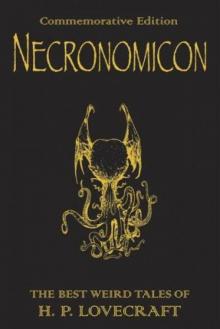 The Definitive H.P. Lovecraft: 67 Tales Of Horror In One Volume
The Definitive H.P. Lovecraft: 67 Tales Of Horror In One Volume The Complete Works of H.P. Lovecraft
The Complete Works of H.P. Lovecraft Other Gods and More Unearthly Tales
Other Gods and More Unearthly Tales Lovecraft's Fiction Volume I, 1905-1925
Lovecraft's Fiction Volume I, 1905-1925 The Shadow Out of Time
The Shadow Out of Time The Shunned House
The Shunned House Lovecraft's Fiction Volume II, 1926-1928
Lovecraft's Fiction Volume II, 1926-1928 The Thing on the Doorstep and Other Weird Stories
The Thing on the Doorstep and Other Weird Stories Dream Cycle of H. P. Lovecraft: Dreams of Terror and Death
Dream Cycle of H. P. Lovecraft: Dreams of Terror and Death Great Tales of Horror
Great Tales of Horror Shadows of Death
Shadows of Death Delphi Complete Works of H. P. Lovecraft (Illustrated)
Delphi Complete Works of H. P. Lovecraft (Illustrated) Waking Up Screaming: Haunting Tales of Terror
Waking Up Screaming: Haunting Tales of Terror H.P. Lovecraft Goes to the Movies
H.P. Lovecraft Goes to the Movies The Road to Madness
The Road to Madness The Complete H.P. Lovecraft Reader (68 Stories)
The Complete H.P. Lovecraft Reader (68 Stories) The Horror in the Museum
The Horror in the Museum Collected Fiction Volume 1 (1905-1925): A Variorum Edition
Collected Fiction Volume 1 (1905-1925): A Variorum Edition Lovecrafts_Fiction, vol.I_1905-1925
Lovecrafts_Fiction, vol.I_1905-1925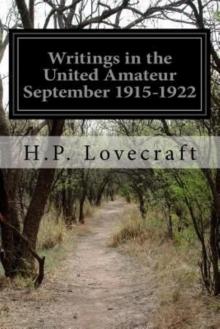 Writings in the United Amateur, 1915-1922
Writings in the United Amateur, 1915-1922 H.P. Lovecraft: The Complete Works
H.P. Lovecraft: The Complete Works Collected Fiction Volume 3 (1931-1936): A Variorum Edition
Collected Fiction Volume 3 (1931-1936): A Variorum Edition H.P. Lovecraft: The Complete Fiction
H.P. Lovecraft: The Complete Fiction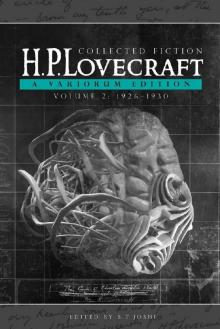 Collected Fiction Volume 2 (1926-1930): A Variorum Edition
Collected Fiction Volume 2 (1926-1930): A Variorum Edition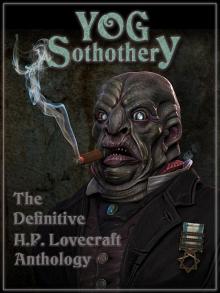 Yog Sothothery - The Definitive H.P. Lovecraft Anthology
Yog Sothothery - The Definitive H.P. Lovecraft Anthology The Complete H.P. Lovecraft Collection (Xist Classics)
The Complete H.P. Lovecraft Collection (Xist Classics)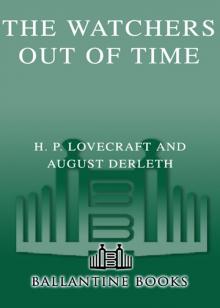 The Watchers Out of Time
The Watchers Out of Time Eldritch Tales
Eldritch Tales The Other Gods And More Unearthly Tales
The Other Gods And More Unearthly Tales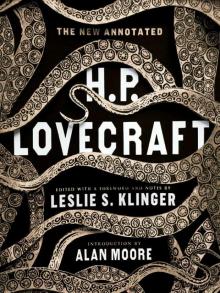 The New Annotated H. P. Lovecraft
The New Annotated H. P. Lovecraft At the mountains of madness
At the mountains of madness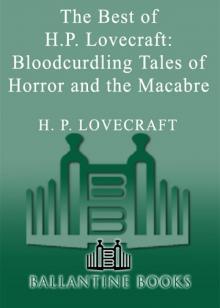 Bloodcurdling Tales of Horror and the Macabre
Bloodcurdling Tales of Horror and the Macabre Fossil Lake II: The Refossiling
Fossil Lake II: The Refossiling Shadows of Carcosa: Tales of Cosmic Horror by Lovecraft, Chambers, Machen, Poe, and Other Masters of the Weird
Shadows of Carcosa: Tales of Cosmic Horror by Lovecraft, Chambers, Machen, Poe, and Other Masters of the Weird H. P. Lovecraft
H. P. Lovecraft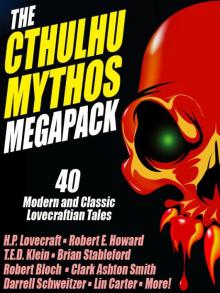 The Cthulhu Mythos Megapack
The Cthulhu Mythos Megapack The Complete H. P. Lovecraft Reader (2nd Edition)
The Complete H. P. Lovecraft Reader (2nd Edition) The Complete Fiction
The Complete Fiction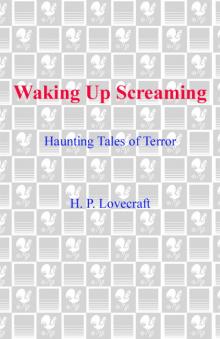 Waking Up Screaming
Waking Up Screaming Transition of H. P. Lovecraft
Transition of H. P. Lovecraft![[1935] The Shadow Out of Time Read online](http://i1.bookreadfree.com/i2/04/12/1935_the_shadow_out_of_time_preview.jpg) [1935] The Shadow Out of Time
[1935] The Shadow Out of Time The Horror Megapack
The Horror Megapack